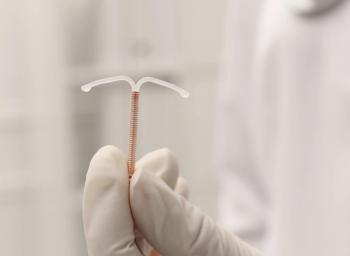
Oral Contraceptive Linked to Increased Risk for VTE
Which oral contraceptive is most appropriate for your patient? A new study published in the British Medical Journal may influence your prescribing decision, as researchers have found that certain oral contraceptives are more likely to cause venous thromboembolism (VTE).
Which oral contraceptive is most appropriate for your patient? A new study published in the British Medical Journal may influence your prescribing decision, as researchers have found that certain oral contraceptives are more likely to cause venous thromboembolism (VTE).
Dr jvind Lidegaard, professor of obstetrics and gynecology at the University of Copenhagen, Denmark, and colleagues conducted a cohort study using four national historic registries in Denmark to determine relative and absolute risks of first time venous thromboembolism. The study looked at all women aged 15 through 49 between 1995 and 2009 and included about 1.2 million women of reproductive age. Of the study cohort, 31.7% had never used hormonal contraception while 68.3% had used some kind of hormonal contraception at some point. Patients had no history of cancer or blood clots.
Lidegaard et al. found a total of 4,307 venous thromboembolic events; the kinds of events can be found in Figure 1. The researchers further noted that the adjusted relative risk increased 6.8-fold from the youngest to the oldest women, while the adjusted relative risk was reduced by 51% with increasing education. Interestingly, they found the relative risk of VTE from using oral contraceptives with norethisterone, levonorgestrel, desogestrel, or gestodene decreased with decreasing estrogen dose (Figure 2).
Figure 1. Types of VTEs
(click to open full size)
Figure 2. Relative risk for VTE based on oral contraceptive type
Overall, Lidegaard and colleagues found that patients who were currently taking oral contraceptives with levonorgestrel had a threefold increased risk for venous thrombosis as compared to those who did not use oral contraceptives; they also found that patients who used oral contraceptives with desogestrel, gestodene, drospirenone, or cyproterone acetate had a sixfold to sevenfold increased risk.
“This would give a rate ratio between the groups using oral contraceptives with desogestrel, gestodene, drospirenone, or cyproterone and those using oral contraceptive with levonorgestrel of at least 2,” the study authors explained. “It is unlikely that these findings could be explained by bias or confounding.”
While oral contraceptives remain relatively safe, Lidegaard and colleagues noted that clinicians might consider this information when prescribing these medications. They explained: “If we anticipate that oral contraceptives with desogestrel, gestodene, or drospirenone increase the risk of venous thromboembolism sixfold and that those with levonorgestrel increase the risk threefold, and that the absolute risk of venous thromboembolism in current users of the former group is on average 10 per 10 000 women years, then 2000 women would need to shift from using oral contraceptives with desogestrel, gestodene, or drospirenone to those with levonorgestrel to prevent one event of venous thromboembolism in one year.”
Meanwhile, the US Food and Drug Administration released its final report on the risk for VTE in women taking oral contraceptives containing drospirenone. According to their study data, women who use drospirenone-containing birth control pills have an approximately 1.5-fold increase in the risk of developing blood clots relative to women using other types of hormonal contraceptives. The FDA scientists explained that this study added to the “increasing body of evidence” that demonstrates a link between drospirenone/ethinyl estradiol tablets and increased risk for VTE as compared to that of standard low-dose combined hormonal oral contraceptives. The FDA also found a new concern: their data demonstrated an increased risk for VTE with the etonogestrel/ethinyl estradiol vaginal ring relative to standard combined hormonal contraceptive pills.
The new study findings will be presented at a joint meeting of the Reproductive Health Drugs Advisory Committee and the Drug Safety and Risk Management Advisory Committee in early December.
References:
Lidegaard O, Nielsen LH, Skovlund CW, et al. Risk of venous thromboembolism from use of oral contraceptives containing different progestogens and oestrogen doses: Danish cohort study, 2001-9. BMJ. 2011 Oct 25;343:d6423.
Brooks M. FDA Provides Update on Drospirenone VTE Risk. Medscape News. Oct 27, 2011.
Add your comments below.
Newsletter
Get the latest clinical updates, case studies, and expert commentary in obstetric and gynecologic care. Sign up now to stay informed.
















